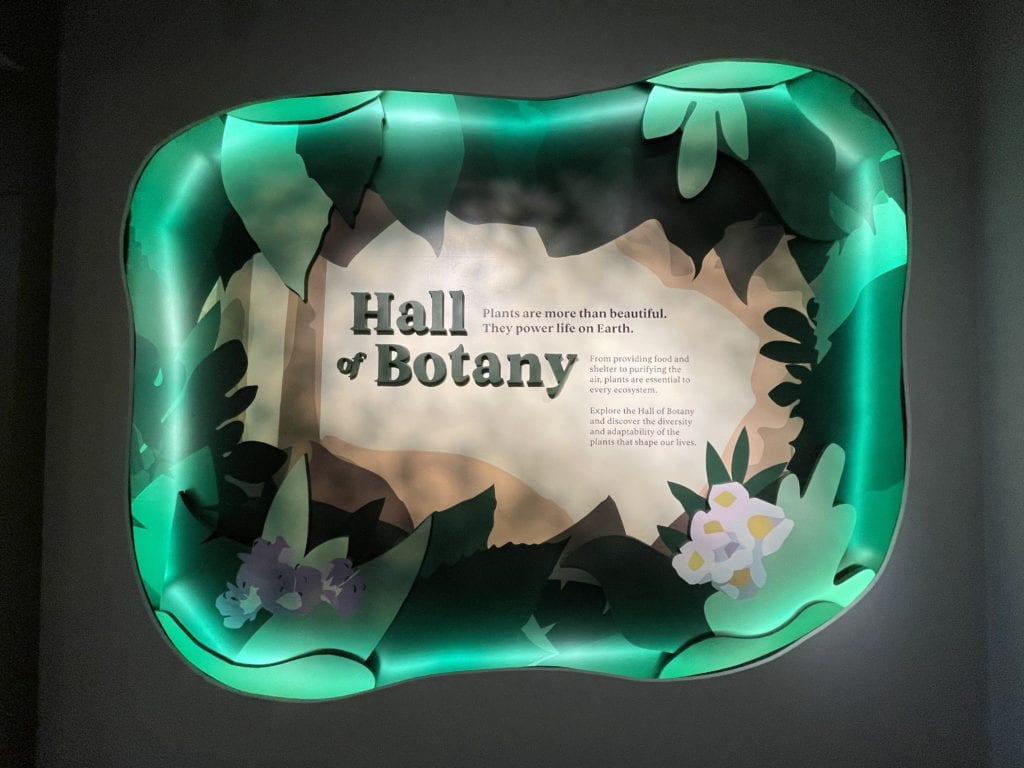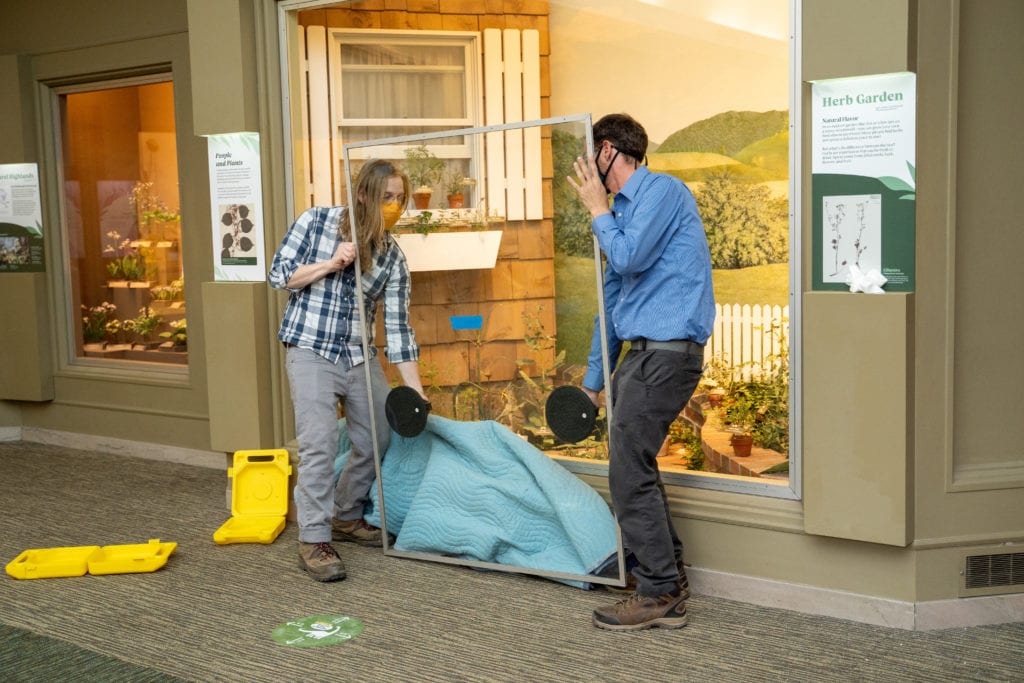Enhanced exhibition reveals “behind the scenes” research by museum scientists
Other recent updates to family favorites, Dinosaurs in Their Time and Discovery Basecamp

Image credit: Tim Evans
Carnegie Museum of Natural History’s Hall of Botany re-opens May 22, 2021, with a new entry experience and fresh storytelling that connects the beloved exhibition to the museum’s initiatives around the Anthropocene and nature. Updated interpretation links the historical dioramas to current research happening every day at the museum and out in the field.
“The Hall of Botany reverses the background roles of many plants in museum displays and places them front and center,” says Mason Heberling, Assistant Curator of Botany. “Opening in 1928, with incredible artistic detail, these dioramas transport you to the major biomes of North America in a single spot. This refresh emphasizes the Hall of Botany’s relevance in the context of environmental change and the importance of plants in our daily lives. It also highlights the importance of our plant collections to help us understand these changes.”
The new Hall of Botany experience begins with an introduction wall featuring an immersive mural, leaves that appear to move in a light breeze, and a video showcasing how specimens are collected and preserved in the museum’s herbarium. Vibrant lighting and graphic design, new carpeting, and lively introductory text invite visitors in from the nearby wildlife halls and enhance engagement with the beloved dioramas in the exhibition.
“The new Hall of Botany entry experience is designed to grab visitors’ attention utilizing light, motion, and color to draw them into this beautiful gallery,” says Sarah Crawford, Director of Exhibitions. “The added entry video and labels show visitors that plants are integral to their own lives and to life on Earth, while showcasing the museum’s extensive and active herbarium collection.”

Image credit: Tim Evans
The renovations were supported by the National Science Foundation as part of a grant to digitize nearly 200,000 plant specimens from the Mid-Atlantic Region. The Carnegie Museum of Natural History’s grant was part of the Mid-Atlantic Megalopolis Project, a network of 13 institutions spanning the region from Washington, D.C. to New York City. By participating in this study, CMNH added important information about the environmental history of the Pittsburgh region. The new video in the Hall of Botany’s entryway shows scientists collecting specimens in the field, preserving them, and ultimately digitizing them so the data can be used by researchers all over the world.
“If Mason [Heberling] hadn’t included funding for exhibitions updates in his grant application, none of these changes would have been possible,” says Crawford. “He and Bonnie [Isaac, Collection Manager of Botany] were incredible collaborators and a pleasure to work with. This project really was a joint effort between the Section of Botany and the Exhibitions team.”
The new labels and graphics created in the museum’s Print Shop use innovative green printing techniques: fiberboard composed of 100% recycled material and a new type of vinyl which contains no Polyvinyl Chlorides (PVCs).
The Hall of Botany is one of several recently renovated areas of the museum. Dinosaurs in Their Time features new carpet with a color palette that complements the dinosaurs and their recreated environments. Four impressive “sea monsters” are now suspended in the Cretaceous Seaway gallery, including a first-of-its-kind juvenile plesiosaur. A fully restored Tylosaurus skull fossil is back on display after many decades. Discovery Basecamp, a space especially for children to play and learn, has a new no-touch activity where kids buzz and dance like bees, learning how honey bees “talk” to each other while still social distancing. Tim Pearce, TikTok star and Curator of the Section of Mollusks, also takes us behind the scenes with a video from the collection space and a new display of mollusks.
